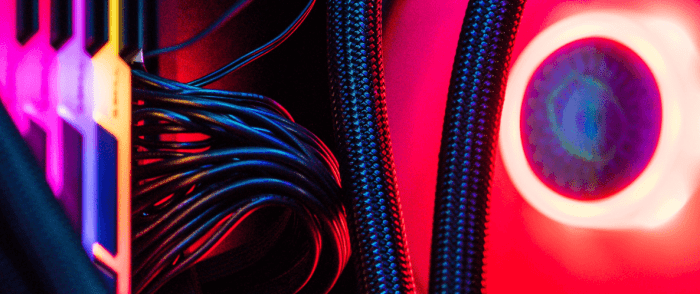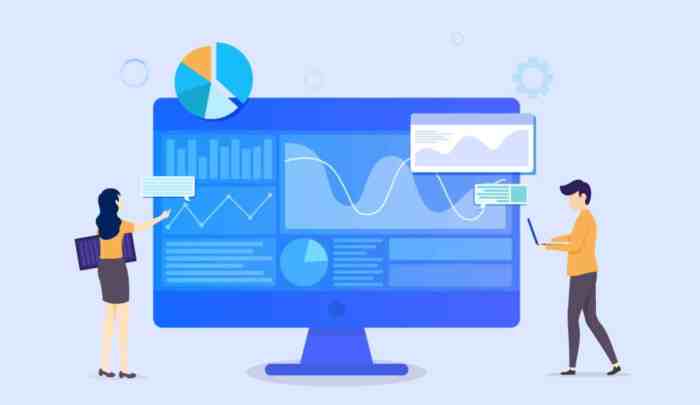RMM for internal IT departments is revolutionizing how businesses manage their technology. No more endless troubleshooting sessions or reactive firefighting; RMM offers a proactive approach, empowering IT teams to monitor, manage, and maintain their entire infrastructure remotely. From automating routine tasks to predicting potential issues before they arise, RMM solutions are transforming IT departments into efficient, proactive powerhouses.
This deep dive explores how RMM can boost your IT game.
We’ll cover the core functionalities of RMM systems, comparing cloud-based and on-premise options, and detailing implementation strategies. We’ll also delve into leveraging RMM for proactive monitoring, troubleshooting, reporting, and analyzing performance data. Finally, we’ll examine the cost-benefit analysis and explore future trends in RMM technology, including the exciting possibilities of AI and machine learning.
Troubleshooting and Remediation with RMM: Rmm For Internal It Departments

Remote Monitoring and Management (RMM) software has revolutionized how IT departments handle troubleshooting and remediation. Gone are the days of endless phone calls and on-site visits for seemingly simple issues. RMM empowers IT teams with the tools to diagnose and resolve problems remotely, significantly boosting efficiency and reducing downtime.RMM Facilitates Remote Troubleshooting and Problem ResolutionRMM platforms offer a centralized dashboard providing a real-time view of the entire IT infrastructure.
This allows technicians to monitor system performance, identify potential issues before they escalate, and remotely access devices to troubleshoot problems. Features like remote control, patch management, and automated scripting enable quick remediation of various issues, minimizing disruption to end-users. The ability to remotely access and control devices is particularly valuable when dealing with geographically dispersed users or critical systems requiring immediate attention.
Examples of RMM Use in Diagnosing and Resolving Common IT Issues
RMM excels at handling a wide range of common IT problems. For instance, a slow computer might be diagnosed through RMM’s performance monitoring tools, revealing high disk usage or a resource-intensive application. The technician can then remotely terminate unnecessary processes or recommend software updates. Similarly, network connectivity issues can be pinpointed by analyzing network traffic and identifying bottlenecks.
A printer malfunction can be addressed by remotely checking printer settings, driver status, and even initiating a print test. In cases of malware infections, RMM can initiate automated scans and quarantines, removing threats without needing direct physical access to the affected machine. Finally, software updates and security patches can be deployed remotely to all devices, ensuring systems are up-to-date and secure, preventing vulnerabilities before they are exploited.
Comparison of RMM-Assisted Troubleshooting versus Traditional Methods
Traditional troubleshooting methods often involve time-consuming processes. They rely heavily on phone calls, emails, and potentially multiple on-site visits. This approach is inefficient, especially for widespread issues affecting numerous users. RMM streamlines this process. Instead of relying on user reports, technicians have real-time visibility into system health.
Remote access enables quick diagnosis and remediation, reducing resolution times significantly. The centralized management offered by RMM also makes it easier to track and manage multiple incidents simultaneously, enhancing overall IT team productivity. The cost savings from reduced travel time and improved efficiency are substantial benefits. For example, imagine resolving a network connectivity issue affecting 100 users remotely within minutes, compared to the hours or days it might take using traditional methods.
RMM Process for Incident Management
The following flowchart illustrates the typical incident management process using RMM:
A visual representation would be helpful here. Imagine a flowchart with the following steps:
1. Incident Detection
RMM alerts the IT team to a problem (e.g., system crash, slow performance, security alert).
2. Remote Access
The technician uses RMM to remotely access the affected device.
3. Diagnosis
The technician uses RMM tools to diagnose the root cause of the problem.
4. Remediation
The technician uses RMM tools to fix the problem (e.g., restarting services, applying patches, removing malware).
5. Verification
The technician verifies that the problem has been resolved.
6. Closure
The incident is closed in the RMM system.
Array
Implementing a Remote Monitoring and Management (RMM) system can significantly impact an internal IT department’s efficiency and cost structure. A thorough cost-benefit analysis is crucial to justify the investment and ensure its alignment with organizational goals. This analysis will explore the total cost of ownership (TCO), potential return on investment (ROI), and a comparison with alternative IT management approaches.
Total Cost of Ownership (TCO) of an RMM System
The TCO of an RMM system encompasses various factors. Software licensing fees vary depending on the number of devices managed, the features included, and the vendor chosen. Expect ongoing subscription costs, often billed annually or monthly. Hardware requirements might include additional servers or infrastructure upgrades to support the RMM platform, though many cloud-based solutions minimize this need.
Finally, personnel costs include the time invested in implementation, training, ongoing maintenance, and support. For example, a mid-sized company with 500 endpoints might pay $10,000 annually for software licensing, $2,000 for infrastructure upgrades, and $5,000 for staff training and maintenance, resulting in a yearly TCO of $17,000. This is just an estimate, and actual costs will vary significantly based on specific needs and chosen RMM solution.
Return on Investment (ROI) of Implementing an RMM Solution
The ROI of an RMM system stems from increased efficiency and reduced operational costs. Automated patching, proactive monitoring, and remote troubleshooting minimize downtime and the need for on-site interventions. Faster resolution times lead to increased employee productivity and reduced IT support tickets. For instance, if an RMM system reduces downtime by 10% for a company with an average downtime cost of $1000 per hour, and experiences 50 hours of downtime annually, the savings would be $5000 annually.
Considering the example TCO of $17,000, the net benefit is a negative ROI in the first year. However, over several years, the cumulative savings from reduced downtime and increased efficiency often outweigh the initial investment.
Cost-Effectiveness Compared to Alternative Approaches
Traditional IT management often relies on manual processes, reactive troubleshooting, and on-site visits. This approach can be significantly more expensive in the long run due to higher labor costs, increased downtime, and inefficient resource allocation. An RMM system offers a cost-effective alternative by automating many tasks, improving response times, and providing a centralized view of the IT infrastructure.
A company relying solely on in-person IT support might spend considerably more on employee salaries, travel expenses, and overtime, compared to a company leveraging an RMM system for remote management and proactive monitoring. The long-term cost savings from an RMM system often surpass the initial investment.
Summary of Benefits and Costs Associated with RMM Adoption, Rmm for internal it departments
| Benefit | Cost |
|---|---|
| Reduced downtime and improved system uptime | Software licensing fees |
| Increased efficiency and productivity | Hardware upgrades (potentially) |
| Proactive monitoring and preventative maintenance | Personnel training and maintenance |
| Centralized management and reporting | Implementation costs |
Ultimately, adopting RMM for your internal IT department isn’t just about upgrading your tech stack; it’s about transforming your IT strategy. By shifting from reactive problem-solving to proactive management, you’ll boost efficiency, enhance security, and significantly improve the overall user experience. The insights and strategies Artikeld here will empower you to harness the full potential of RMM, driving your IT department towards a future of seamless operation and unparalleled performance.
Get ready to experience the RMM revolution!
Common Queries
What are the major security concerns when implementing RMM?
Security is paramount. Key concerns include securing the RMM server itself, managing access controls to prevent unauthorized access, and ensuring data encryption both in transit and at rest. Regular security audits and updates are essential.
How do I choose the right RMM vendor for my business?
Consider factors like your budget, the size and complexity of your IT infrastructure, the level of support offered, and the specific features you need. Start with a trial or demo to test the software before committing.
What is the typical learning curve for using an RMM system?
The learning curve varies depending on the system’s complexity and your team’s existing technical skills. Most vendors offer training resources, and many systems are designed for intuitive use. Expect some initial training time, but the long-term benefits outweigh the initial learning curve.
Can RMM integrate with existing IT tools?
Many RMM solutions offer integrations with other IT management tools, such as ticketing systems, help desk software, and security information and event management (SIEM) platforms. Check for compatibility with your existing tools before selecting a vendor.
What are some common mistakes to avoid when implementing RMM?
Common mistakes include inadequate planning, insufficient training for IT staff, neglecting security protocols, and failing to establish clear roles and responsibilities. Thorough planning and a phased rollout can minimize these risks.
Check online payroll services to inspect complete evaluations and testimonials from users.